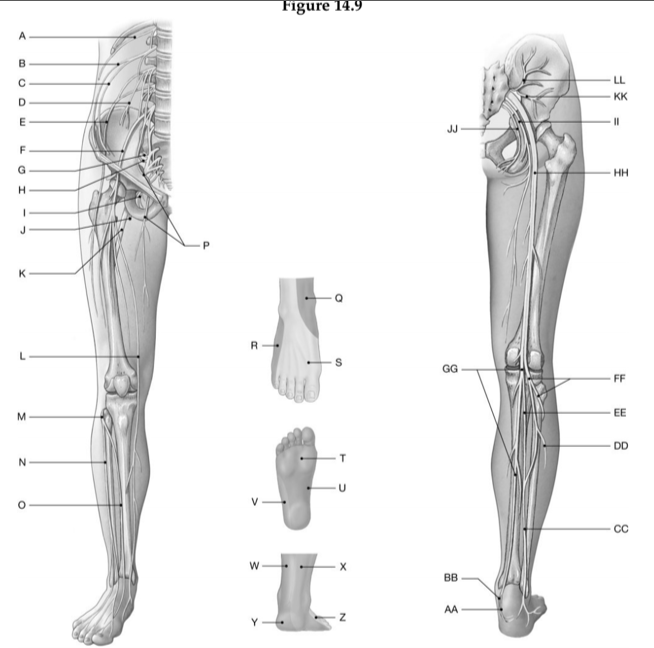Which of the following reasons explains why channels are required in membranes in order for neurons to perform their function?
a. Neurons have to function in reception (e.g. sensory); therefore, they must be able to switch channels in order to get the appropriate information.
b. The lipid bilayer is impermeable to ions and polar molecules, and ion flow through the membrane is essential for nervous transmission of information.
c. Channels permit the flow of water through the membrane, and water is necessary for hydrolysis reactions in the cytoplasm.
d. Channels are required in order to keep Ca2+ levels low inside the cytoplasm.
B
You might also like to view...
The sympathetic trunk ganglia are primarily composed of
A. axons of preganglionic neurons. B. axons of postganglionic neurons. C. somas of preganglionic neurons. D. somas of ganglionic neurons.
Using the figure below, identify the labeled part.

1. Label A: ______________________________
2. Label B: ______________________________
3. Label C: ______________________________
4. Label D: ______________________________
5. Label E: ______________________________
6. Label F: ______________________________
7. Label G: ______________________________
8. Label H: ______________________________
9. Label I: ______________________________
10. Label J: ______________________________
11. Label K: ______________________________
12. Label L: ______________________________
13. Label M: ______________________________
14. Label N: ______________________________
15. Label O: ______________________________
16. Label P: ______________________________
17. Label Q: ______________________________
18. Label R: ______________________________
19. Label S: ______________________________
20. Label T: ______________________________
21. Label U: ______________________________
22. Label V: ______________________________
23. Label W: ______________________________
24. Label X: ______________________________
25. Label Y: ______________________________
26. Label Z: ______________________________
27. Label AA: ______________________________
28. Label BB: ______________________________
29. Label CC: ______________________________
30. Label DD: ______________________________
31. Label EE: ______________________________
32. Label FF: ______________________________
33. Label GG: ______________________________
34. Label HH: ______________________________
35. Label II: ______________________________
36. Label JJ: ______________________________
37. Label KK: ______________________________
38. Label LL: ______________________________
Only a fraction of the genetic mutations that occur in the body involve loss of control over the cell's growth and multiplication
a. True b. False Indicate whether the statement is true or false
Which is characteristic of cross bridges?
a. they are a component of thick filaments. b. they are comprised of actin c. they have an troponin binding site. d. they attach to Z lines e. they allow shortening of the muscle proteins